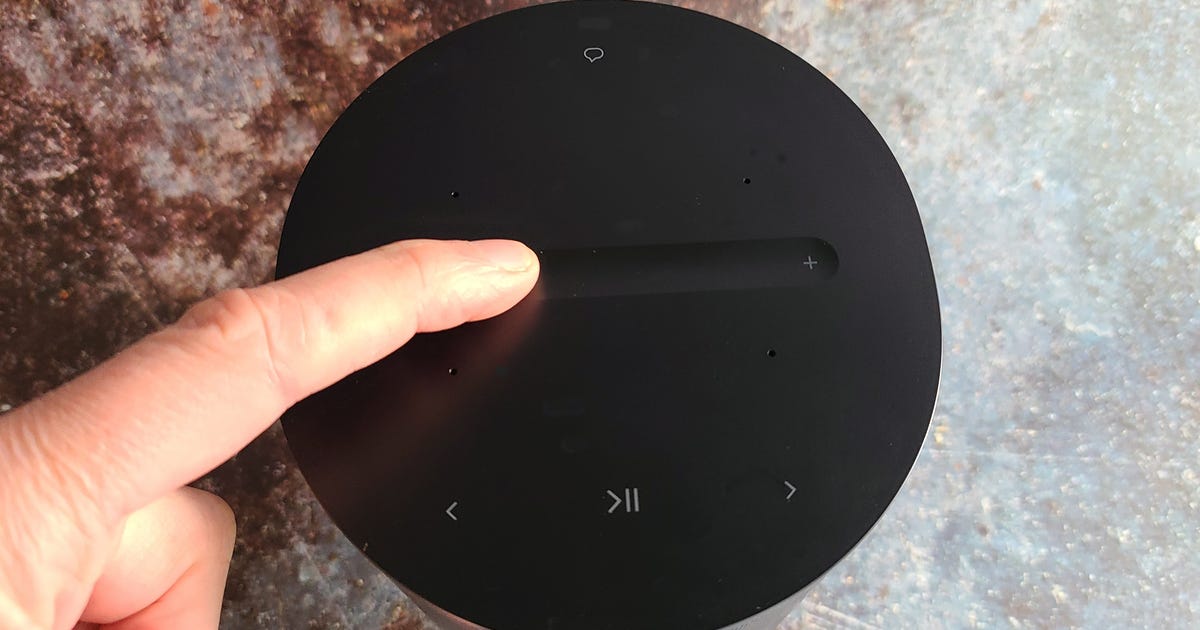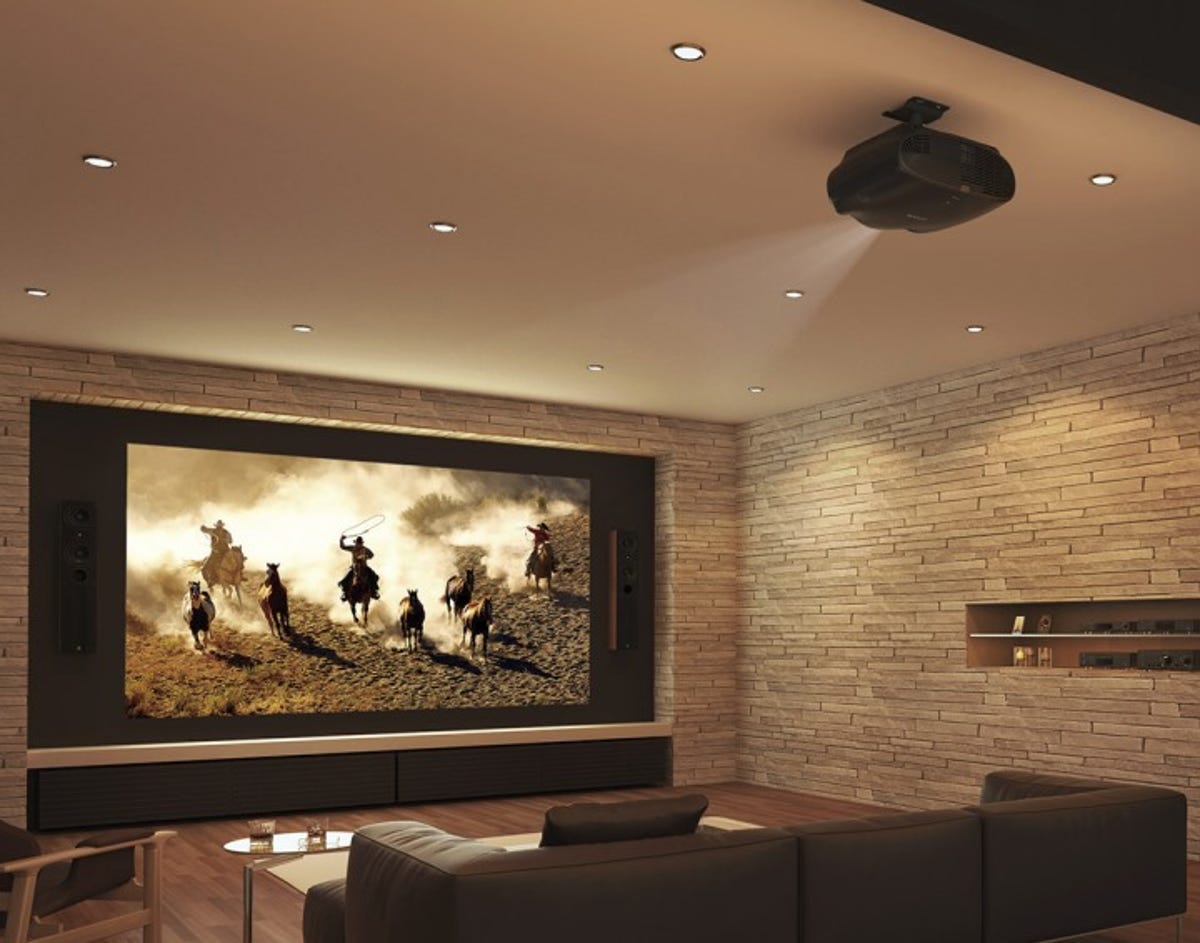
Epson
DENVER–Epson’s new high-end LS10000 and LS9600e projectors will use lasers reflecting off something that’s not quite unlike LCOS, to create a massive image on your screen.
Boasting 1,500 and 1,300 lumens respectively, a potentially huge contrast ratio, motorized lens shift (with memory), and more, they represent a big step up from the Epson projectors of yore (yore being last year).
Details and a first look, incoming…
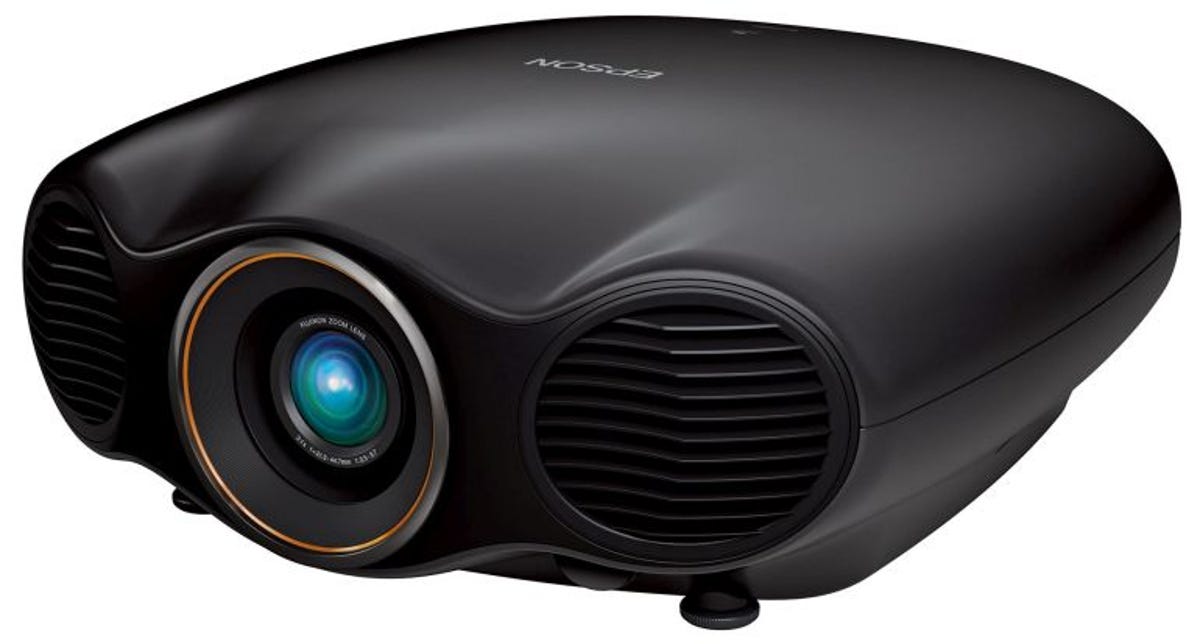

Epson
CNET’s first take of the LS10000 with more details and specs .
Not LCOS
The three main projector types are DLP, LCD, and LCOS. The LS10000/LS9600e use a variant of LCOS Epson is calling 3LCD Reflective, which is Liquid Crystal on Quartz. I guess that’s… LCOQ? Maybe not.
Check out how LCOS works to get a general idea about 3LCD Reflective. The short version, potentially higher contrast ratios, and improved pixel density, over LCD.
4K… Almost
The LS10000 has “4K Enhancement Technology” which, like JVC’s upper-model projectors from the past few years, does some optical trickery to get 3,840×2,160 on screen from 1,920×1,080 chips. Epson hasn’t revealed details about how they’re doing it, but from this diagram you can get a general idea of what’s going on.
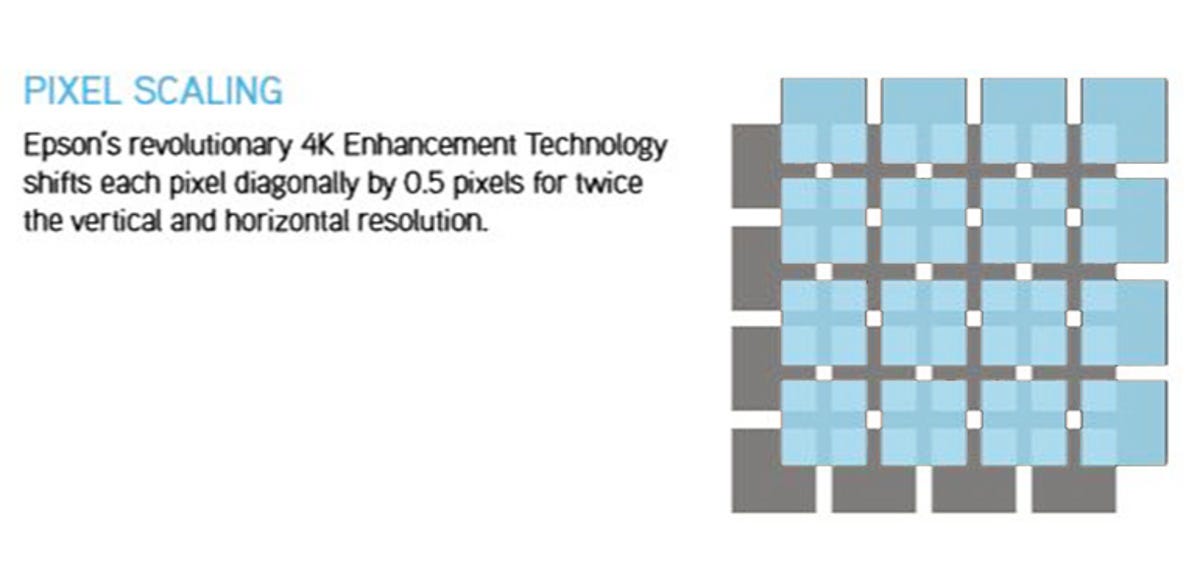

Epson
Will this appear sharper than 1080p? Probably. Perhaps not as much as a true 4K projector. It will accept 4K content, however. The projector pair also has Epson’s Super Resolution detail enhancement, which I’ve played with on previous projectors, and it does a decent job increasing apparent resolution.
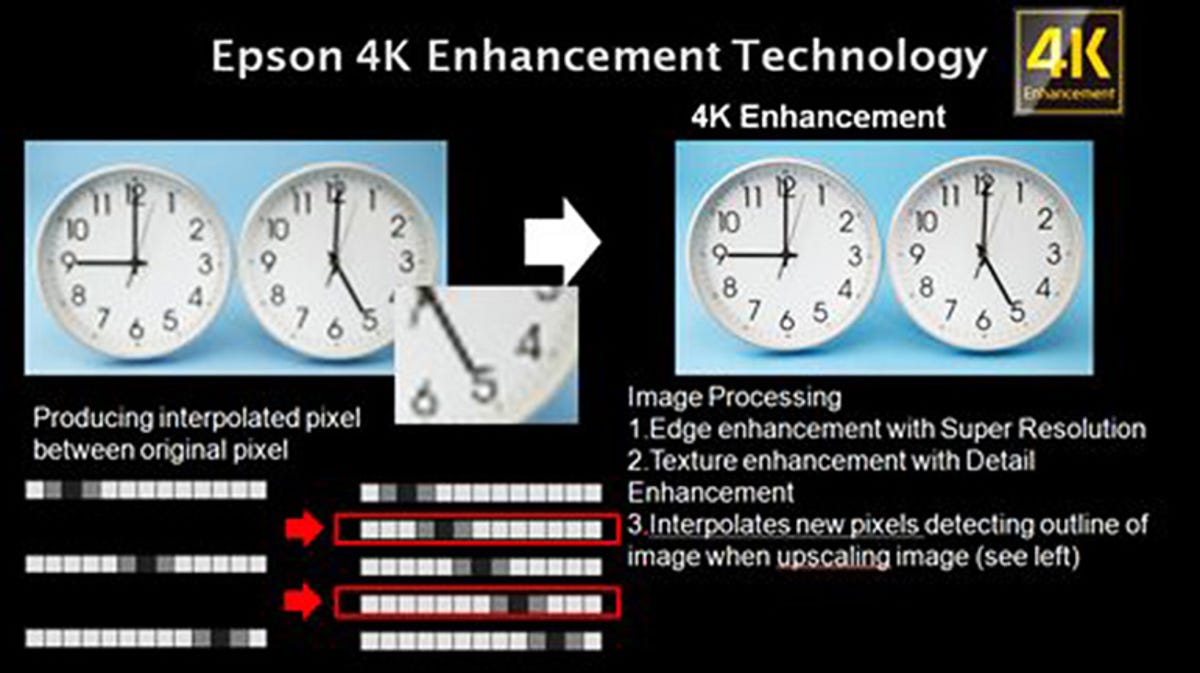

Epson
The 9600e doesn’t have the 4K Enhancement, but does have Epson’s wireless HD transmitter included. This is basically a line of sight device (so cabinets are iffy), but will do 1080p/60 with no degradation.
LASERS!
Ok, here’s the cool part. Both the LS10000 and 9600 use two blue lasers to create light, instead of the traditional UHP lamp. One blue laser creates the blue light (obviously). The other blue laser hits a yellow phosphor, which is then split to create red and green (yellow being a mix of red and green).
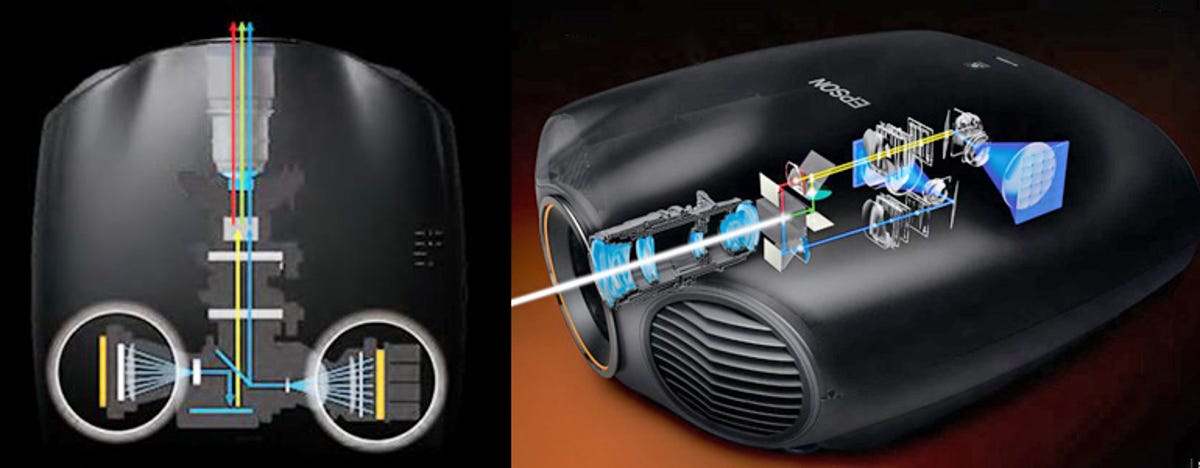

Epson
There are many benefits to using lasers. Instant off and quick on are great, letting the projector work more like a TV. Easier to cool is a huge bonus, meaning the projector can be really quiet (not something Epson has excelled at in the past). Also, lasers respond much faster to changes in brightness, faster than an iris, so the light output can decrease right in line with the average video level, improving dynamic contrast with less chance of the brightness pulsing typical of many auto-iris systems.
An expected life of 30,000 hours is pretty nice as well.
One of the drawbacks is light output. A claimed 1,500 (1,300 for the 9600e) lumens isn’t a lot, though enough for a bright image on a 100-inch screen. For comparison, Epson’s ultra-bright 5030 has a claimed 2,400 lumens. JVC’s excellent (and LCOS) X35 has a claimed 1,300 lumens. No one would call the X35 dim, so there should be enough light.
Related Stories
- DLP vs LCD vs LCoS: Projector tech pros and cons
- How big a TV should I buy?
- The big picture: Projection screen basics
- Don’t buy a jumbo LCD TV, buy a projector
- Epson LS10000
Eyes On
I got a chance to see two demo clips of the LS10000, one 4K, one 1080p. The 4K clip was slow panoramas of different cities. I was sitting in the back row, though it did seem very detailed. After the demos, I walked up to the screen, and the pixels were hard to make out, even with my face to the screen.
Contrast-wise, the image was rich and deep, but it was hard to tell if it was JVC-levels of contrast performance. Brightness was plenty on the 11-foot-wide 21×9 screen.
The 1080p clip was Need for Speed, which didn’t look as good. The greens seemed off, but I don’t know the content, and talking with the guy who calibrated the projector after the demo, he said the green point was accurate. The other colors looked good.
Keep in mind we were watching an early unit. I’ll be very interested in seeing a production model.
Also, the motorized lens shift is really fast, significantly faster than JVC’s version.
Bottom Line
This looks to be a very well thought out and designed high-end projector from Epson: Lasers, LCO… 3LCD Reflective, lens memory, a quiet chassis. Pricing is a bit vague, though they’re saying “under $8,000.” I bet you a dollar that’s $7,999.
They should ship in the next few months.

